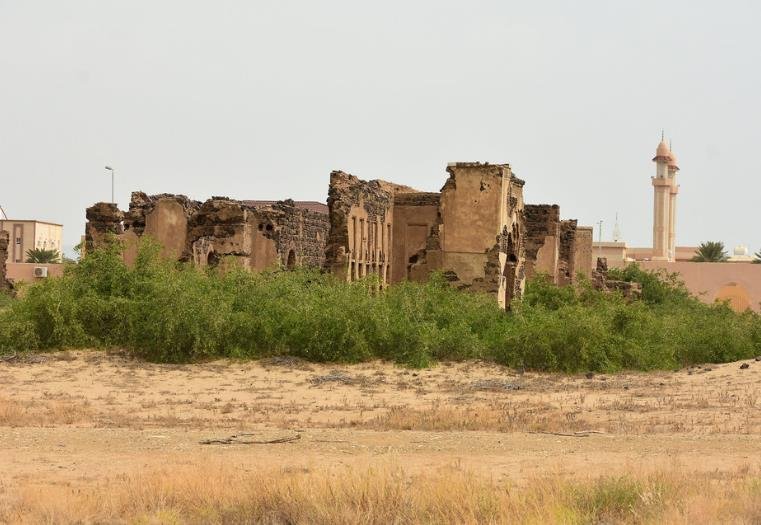In the heart of Saudi Arabia’s Medina Province, a team of archaeologists has made a groundbreaking discovery—a fortified settlement dating back to 2,400 BC. This ancient town, named al-Natah, offers invaluable insights into the transition from nomadic tribes to established urban communities in the early Bronze Age.
Unveiling al-Natah: A Hidden Gem in Khaybar Oasis
The discovery took place in Khaybar, a lush oasis surrounded by vast desert landscapes. For centuries, al-Natah remained concealed beneath fertile lands, preserving its secrets until now. The site reveals the intricate planning and organization of a community that once thrived in this arid region.
French archaeologist Guillaume Charloux, leading the French-Saudi research team, emphasized the significance of the findings. “Finding a 14.5km-long wall around the settlement is unprecedented,” Charloux stated. “It shows a level of societal organization that we didn’t expect for that period.”
The wall encircling al-Natah was not just a defensive structure. It was meticulously organized around the town’s habitat, indicating a sophisticated approach to urban planning. This arrangement suggests that the inhabitants prioritized both security and community cohesion.

Life in al-Natah: A Glimpse into the Past
Al-Natah was home to approximately 500 residents, a sizeable population for its time. The settlement featured a well-planned layout with residential areas interconnected by narrow streets. These streets facilitated movement and communication within the town, fostering a sense of community among its inhabitants.
The presence of a necropolis indicates that the residents had established burial practices, reflecting cultural and religious beliefs. Additionally, the central area, described by researchers as a “decision-making zone,” likely served as the administrative or communal heart of the settlement.
- Key Features of al-Natah:
- 14.5km-long defensive wall
- Residential areas with interconnected streets
- Necropolis for burial practices
- Central administrative zone
Such infrastructure points to a society that valued organization, community, and governance. It wasn’t just a temporary camp; al-Natah was a thriving urban center.
The Mystery of Abandonment
Despite its apparent success, al-Natah was abandoned around a thousand years after its establishment. The reasons behind this sudden desertion remain unclear, leaving archaeologists to speculate. Possible explanations include environmental changes, resource depletion, or socio-political upheavals that forced the inhabitants to relocate.
Understanding why al-Natah was abandoned could provide deeper insights into the challenges faced by early urban societies. It might also shed light on broader patterns of settlement and migration in the Arabian Peninsula during that era.
Comparative Analysis: al-Natah and Levantine Cities
When al-Natah was flourishing, cities along the Levant region—from present-day Syria to Jordan—were experiencing their own growth and development. This parallel raises intriguing questions about cultural and economic exchanges between these regions.
| Feature | al-Natah (Saudi Arabia) | Levantine Cities |
|---|---|---|
| Population | ~500 residents | Varies, generally larger |
| Defensive Structures | 14.5km-long wall | City walls of varying lengths |
| Urban Planning | Organized residential areas and central zones | Complex urban layouts with marketplaces and administrative centers |
| Cultural Practices | Established burial sites | Diverse religious and cultural institutions |
The similarities and differences between al-Natah and contemporary Levantine cities highlight the interconnectedness of early civilizations. Trade routes and cultural exchanges likely played a role in shaping the development of these urban centers.
Future Research and Excavations
The discovery of al-Natah opens new avenues for archaeological research in Saudi Arabia. Ongoing excavations aim to uncover more about the daily lives of its inhabitants, their economic activities, and their interactions with neighboring regions.
Scientists are particularly interested in the town’s infrastructure and how it supported a stable community in such a challenging environment. Future studies may also focus on finding artifacts that can provide a clearer picture of the social and cultural dynamics within al-Natah.
Moreover, the research team plans to collaborate with other international experts to compare al-Natah with similar settlements across the Arabian Peninsula and beyond. This collaborative effort could lead to a more comprehensive understanding of early urbanization processes.
